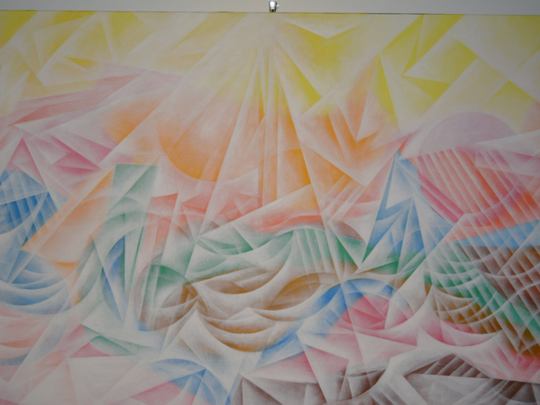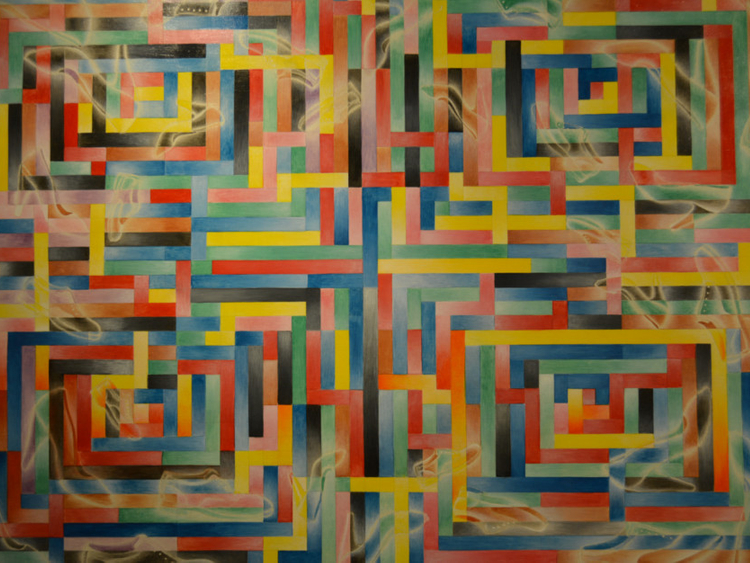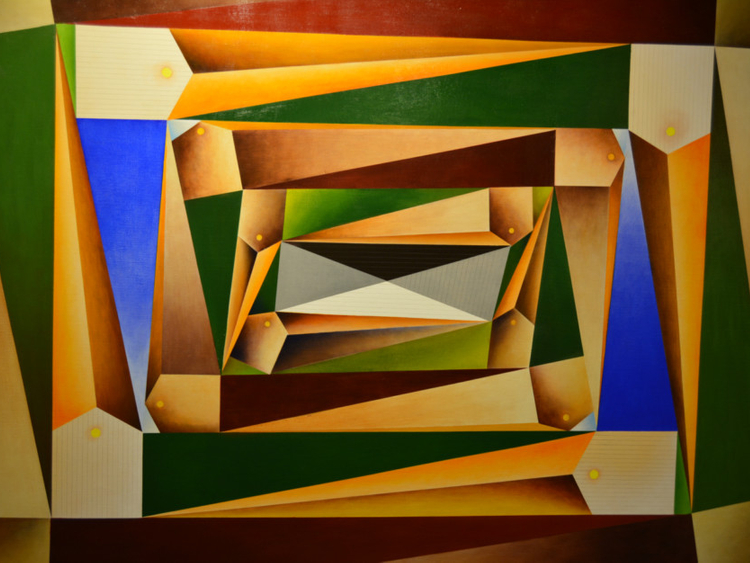
Well-known Italian artist Giuliano Giganti is a leading figure of the “Symbolism” cultural movement in Italy. The versatile artist from Rome works with various media ranging from watercolour, acrylic and oil paints to marble, metal, stone and ceramic. He has created many public artworks, including monuments, mosaics and installations, in various cities in Italy and other countries. He is also known for his expertise in restoring ancient paintings.
Giganti’s first exhibition in the region, “Towards the Free Curves of the Senses”, offers an insight into his artistic journey and the philosophy behind his abstract paintings. The show features paintings on canvas, wood and metal created over the last decade, as well as a new series of vibrant paintings inspired by the artist’s first visit to Dubai a few months ago.
Giganti spoke to Weekend Review about his work and his impressions of Dubai. Excerpts:
What is the concept behind the carefully constructed labyrinths in your early paintings?
The labyrinth represents the problems and demands of life in which we are trapped. But it is also the universe that lies within us. Walking through this labyrinth symbolises an inner journey of self discovery. As you travel through this maze, you encounter a surprise at every turn, and gradually you realise that human beings are made of earth, fire, water and air, the same elements that the universe is made of.
This realisation that we are the micro-universe within the macro-universe ultimately leads us to a state of inner balance and harmony with everything around us. I use red, blue, yellow and black to signify the four elements. The human figure inside the labyrinth is in the same colours as the labyrinth and merges with it because my work is essentially about searching for your soul and being in harmony with nature and the entire universe.
What do the shoes and the hearts incorporated into your labyrinths symbolise?
I often say that the labyrinth is like a dressing room. As you start walking in the labyrinth, you begin to shed the outer layers of the material world. The fading shoes inside my labyrinths convey this idea of going beyond the physical body, where the only experience is of the movement of every step you take. It is a state when your senses are not bound by the restrictive lines of the labyrinth and move freely taking you to a higher level of awareness, closer to your soul and to the cosmos. The heart appears in most of my paintings as a sign of universal love, and of having the awareness to feel the heartbeat of the universe as your own.
What is the meaning of the recurring motif of the house and the coloured borders in your work?
The house is drawn as a triangle, placed over a square. The triangle represents the spiritual world, and the square represents the material world with four elements, four cardinal points and four seasons. The shiny yellow circle between the two signifies the union between the material and the spiritual world and the idea of infinity. This house is a place for contemplation — a temple of the soul.
Sometimes I depict this duality of our existence in black and white, with the harmony of grey in between, or with horizontal and vertical lines inside a circle. And sometimes I use black to signify the material world, blue for the soul, yellow for the intellect and red for universal love. While the house represents the inner temple of an individual, the red, yellow, blue and black borders on all my paintings symbolise the larger universal temple.
Why did you start fragmenting the labyrinths in later works?
As you get older and more in touch with yourself and the universe around you, it is possible to find a way out of the labyrinth of the difficult and tiring path of life, and have higher goals. There is one painting in this show which marks the exact moment of this transition in my life, when I broke out of the labyrinth and began to understand the harmony between everything around me.
How did your visit to Dubai influence your work?
Dubai is a city of the future. There is so much light, movement, energy and optimism here; and it is wonderful to see people from so many countries and backgrounds living together in complete harmony. Unlike other big cities, you feel safe and relaxed here. To me it seems like an ideal world.
After coming here I was able to break out completely from all the negativity inside the labyrinth and to explore the inner and outer world with freedom. In my Dubai paintings I have tried to capture the serenity of the desert, the movement of the ocean waves at the Marina, the beauty of the sunrise reflected on the glass façades of the magnificent buildings, and the youthful, energetic, positive vibe of the city.
The many hearts and the blend of various colours and shapes in these paintings reflect the harmony that exists between people of different cultures, religions and nationalities. My bright palette and touches of gold express my feeling that while in other places you see only one sun, in this city you see many suns. Usually the desert is an arid place, but the people of this region found oil and prosperity from it.
As an artist I am trying to find the richness of gold from the desert of my soul.
Jyoti Kalsi is an arts-enthusiast based in Dubai.
“Towards the Free Curves of the Senses” will run at Sconci Art Gallery, Building 8, Dubai Design District (d3), until February 29.













